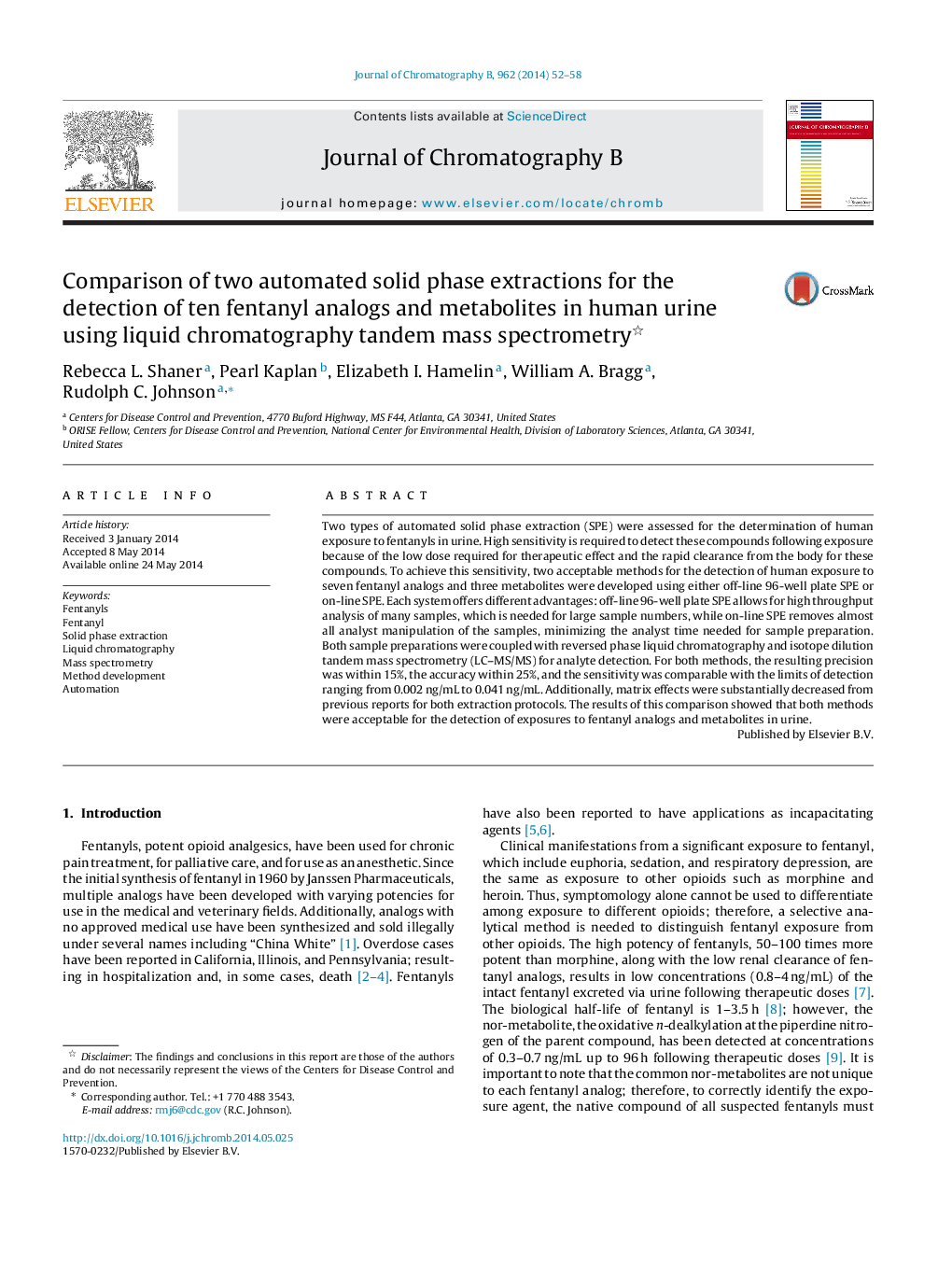| Article ID | Journal | Published Year | Pages | File Type |
|---|---|---|---|---|
| 1212415 | Journal of Chromatography B | 2014 | 7 Pages |
•Two automated SPE methods were developed for analysis of fentanyl analogs and metabolites.•On- and off-line SPE methods were shown to have comparable sensitivity and selectivity.•Both methods suitable for detection of exposure to seven fentanyls in human urine.
Two types of automated solid phase extraction (SPE) were assessed for the determination of human exposure to fentanyls in urine. High sensitivity is required to detect these compounds following exposure because of the low dose required for therapeutic effect and the rapid clearance from the body for these compounds. To achieve this sensitivity, two acceptable methods for the detection of human exposure to seven fentanyl analogs and three metabolites were developed using either off-line 96-well plate SPE or on-line SPE. Each system offers different advantages: off-line 96-well plate SPE allows for high throughput analysis of many samples, which is needed for large sample numbers, while on-line SPE removes almost all analyst manipulation of the samples, minimizing the analyst time needed for sample preparation. Both sample preparations were coupled with reversed phase liquid chromatography and isotope dilution tandem mass spectrometry (LC–MS/MS) for analyte detection. For both methods, the resulting precision was within 15%, the accuracy within 25%, and the sensitivity was comparable with the limits of detection ranging from 0.002 ng/mL to 0.041 ng/mL. Additionally, matrix effects were substantially decreased from previous reports for both extraction protocols. The results of this comparison showed that both methods were acceptable for the detection of exposures to fentanyl analogs and metabolites in urine.
